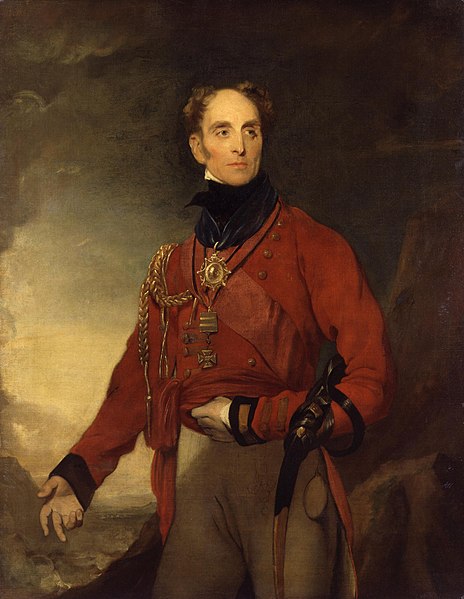FORTHILL PARK is a drumlin-top public park in Enniskillen, the county town of County Fermanagh.
Topped with a tall monument and surrounded by trees, it stands out as a feature from the distance.
Fort Hill has historic interest, both as a 17th century artillery star-fort and as an early public garden, laid out as a promenade by 1846.
The Forthill Promenade and Pleasure Park has always been a space for public use.
In the years following the Plantation of Ulster the park was known as Commons Hill or Cow Hill, where the Enniskilleners, as they were called, were permitted to graze their livestock.
It was also known as Camomile Hill where, in 1689, the Governor of Enniskillen, Gustav Hamilton, ordered a fort of sods to be raised in Enniskillen; hence Forthill.
In 1836, the area was enclosed and planted with trees; it became a promenade and pleasure ground.
Following the Crimean War, a captured Russian gun was brought to the south bastion of the Forthill.
It fired a salute to the first train arriving in the town in 1857 and broke the windows in Belmore Street.
By the 1880s, the park had become overgrown.
Thomas Plunkett, Chairman of the town commissioners, supervised the landscaping of the park.
He felt that the Forthill had become little used and overgrown.
The Forthill Pleasure grounds officially opened on the 7th August, 1891.
It had been transformed: special areas included the Dell, the Fernery, the Fountain, and the Waterfall; all designed by Plunkett.
A new entrance was added and the Forthill steps were built, which saw “The Bower Lane” disappear.
Forthill Bandstand was erected during Plunkett's own lifetime, in 1895, as a mark of appreciation.
The bastions of the fort remain prominent and are grassed.
The park element still has the feeling of a Victorian civic park, with winding paths, clipped evergreen shrubs and island flower beds.
Mature trees provide a canopy above.
The park was officially opened as Fort Hill Pleasure Grounds in 1891.
There are two memorials of high quality: the Cole Monument, built between 1845-57; and the Bandstand, with clock tower, built in 1895.
The Cole Monument takes the form of a Doric column, topped by a statue of General the Hon Sir Galbraith Lowry Cole, GCB, by Farrell.
General Cole, a younger son of the 1st Earl of Enniskillen, died in 1842 at his country seat, Highfield Park, Hampshire, now a hotel.
108 steps lead to the viewing platform atop the Cole Monument, which affords magnificent views of Enniskillen and the surrounding area.
First published in December, 2012.
Topped with a tall monument and surrounded by trees, it stands out as a feature from the distance.
Fort Hill has historic interest, both as a 17th century artillery star-fort and as an early public garden, laid out as a promenade by 1846.
The Forthill Promenade and Pleasure Park has always been a space for public use.
In the years following the Plantation of Ulster the park was known as Commons Hill or Cow Hill, where the Enniskilleners, as they were called, were permitted to graze their livestock.
It was also known as Camomile Hill where, in 1689, the Governor of Enniskillen, Gustav Hamilton, ordered a fort of sods to be raised in Enniskillen; hence Forthill.
In 1836, the area was enclosed and planted with trees; it became a promenade and pleasure ground.
Following the Crimean War, a captured Russian gun was brought to the south bastion of the Forthill.
It fired a salute to the first train arriving in the town in 1857 and broke the windows in Belmore Street.
By the 1880s, the park had become overgrown.
Thomas Plunkett, Chairman of the town commissioners, supervised the landscaping of the park.
He felt that the Forthill had become little used and overgrown.
The Forthill Pleasure grounds officially opened on the 7th August, 1891.
It had been transformed: special areas included the Dell, the Fernery, the Fountain, and the Waterfall; all designed by Plunkett.
A new entrance was added and the Forthill steps were built, which saw “The Bower Lane” disappear.
Forthill Bandstand was erected during Plunkett's own lifetime, in 1895, as a mark of appreciation.
The bastions of the fort remain prominent and are grassed.
The park element still has the feeling of a Victorian civic park, with winding paths, clipped evergreen shrubs and island flower beds.
Mature trees provide a canopy above.
The park was officially opened as Fort Hill Pleasure Grounds in 1891.
There are two memorials of high quality: the Cole Monument, built between 1845-57; and the Bandstand, with clock tower, built in 1895.
The Cole Monument takes the form of a Doric column, topped by a statue of General the Hon Sir Galbraith Lowry Cole, GCB, by Farrell.
General Cole, a younger son of the 1st Earl of Enniskillen, died in 1842 at his country seat, Highfield Park, Hampshire, now a hotel.
108 steps lead to the viewing platform atop the Cole Monument, which affords magnificent views of Enniskillen and the surrounding area.
First published in December, 2012.




No comments:
Post a Comment